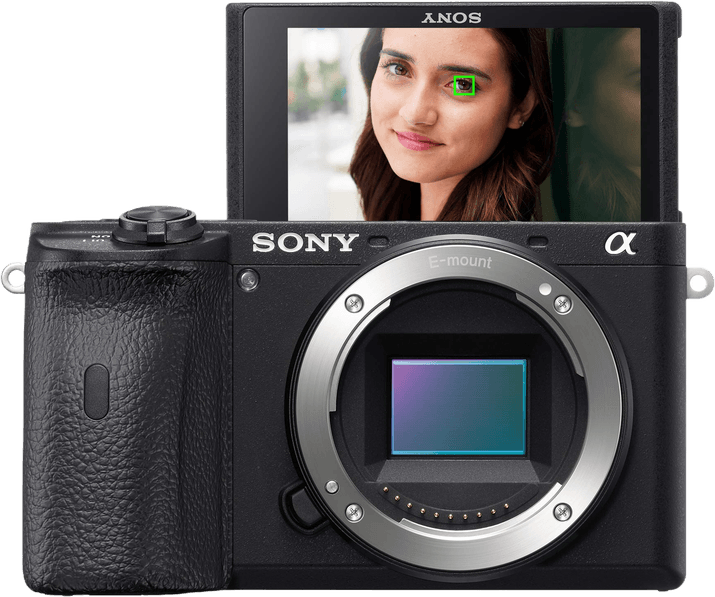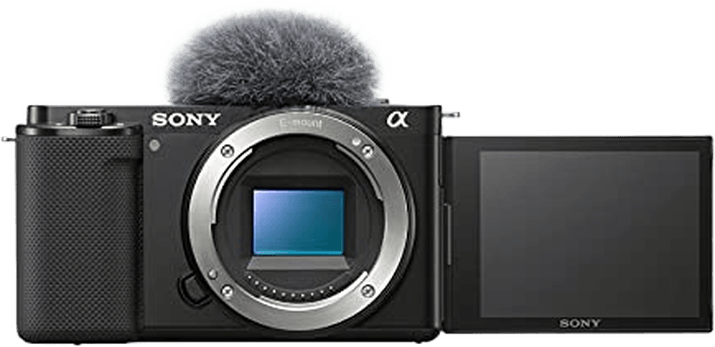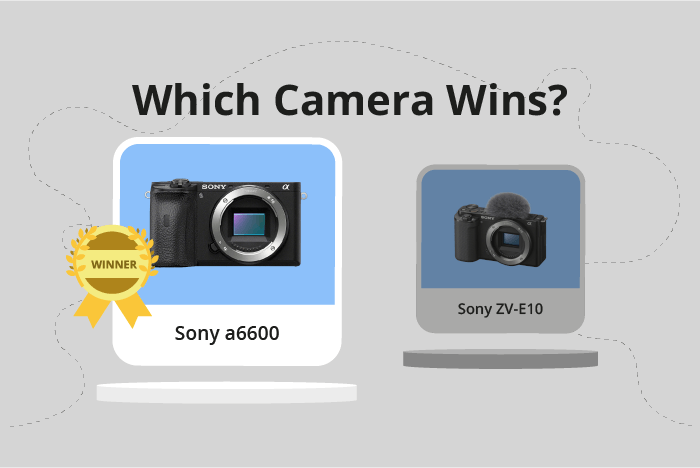Sony a6600 vs ZV-E10 Comparison
Sony a6600

Sony ZV-E10

The Sony a6600 triumphs over the Sony ZV-E10 with a score of 75/100 as opposed to 65/100. Both cameras share the mirrorless feature, were released in the last two years, and have similar dimensions. The a6600, however, has a higher launch price of $1200 compared to the ZV-E10’s $700.
The a6600’s advantage lies in its weight, measuring at 503g, making it more substantial and steadier for photography. On the other hand, the ZV-E10 is lighter at 343g, which is beneficial for those seeking a more portable option.
While the a6600 is the clear winner in terms of overall performance, the ZV-E10’s lower price and lighter weight make it a worthy consideration for those prioritizing affordability and portability.
Sony a6600 vs ZV-E10 Overview and Optics
The Sony a6600 outperforms the Sony ZV-E10 in optics, scoring 76/100 compared to the ZV-E10’s 69/100. Both cameras share several optical features, including a 24-megapixel CMOS sensor, Bionz X processor, APS-C sensor size, 11 fps shooting speed, and Sony E lens mount. However, there are key differences that set these two cameras apart.
The a6600 has a slight edge in megapixels with 24.2, while the ZV-E10 has 24 megapixels. This small difference allows the a6600 to capture slightly more detail in images. Furthermore, the a6600 has a DXOMARK sensor score of 82, lower than the ZV-E10’s score of 86. Despite the lower score, the a6600 compensates with its built-in image stabilization feature, which the ZV-E10 lacks. This advantage allows the a6600 to produce clearer and sharper images, especially in low-light situations or when using telephoto lenses.
On the other hand, the ZV-E10 has a higher DXOMARK sensor score and a different aspect ratio of 4:3, compared to the a6600’s 3:2 aspect ratio. This means the ZV-E10 may produce better image quality in certain conditions. However, the absence of image stabilization is a significant drawback.
Taking all factors into consideration, the Sony a6600 emerges as the superior choice in terms of optics due to its slightly higher megapixel count and the presence of image stabilization. The Sony ZV-E10, while having a higher DXOMARK sensor score and a different aspect ratio, falls short without image stabilization, which is crucial for capturing clear and sharp images.
Sony a6600 vs ZV-E10 Video Performance
The Sony a6600 and the Sony ZV-E10 both have a video score of 91/100, indicating that they offer similar video capabilities. Both cameras share common features, such as 4K video resolution and built-in time-lapse functionality. However, there are differences between the two cameras that set them apart in their video performance.
The Sony a6600 has an edge in video dimensions, offering 3840 x 2160 pixels compared to the ZV-E10’s 3840 x 1920 pixels. This difference means the a6600 provides a slightly higher video resolution, which results in more detailed and sharper footage. With a max video frame rate of 100fps, the a6600 also delivers smooth and natural-looking video recordings.
On the other hand, the Sony ZV-E10 surpasses the a6600 in terms of max video frame rate, boasting an impressive 120fps. This higher frame rate allows for even smoother videos and provides more flexibility in slow-motion video editing. While the ZV-E10’s video dimensions are slightly lower than the a6600’s, the difference is minimal and may not be noticeable in most filming situations.
Taking these factors into account, the Sony a6600 stands out for its higher video dimensions, providing a marginally better video resolution. However, the Sony ZV-E10 excels in max video frame rate, which is beneficial for those seeking smooth footage and slow-motion capabilities. Despite their equal video scores, the choice between these two cameras primarily depends on the user’s specific needs and preferences in video recording.
Sony a6600 vs ZV-E10 Features and Benefits
The Sony a6600 wins the feature comparison with a score of 81/100, while the Sony ZV-E10 scores 68/100. Both cameras share several specifications, such as a 3-inch screen size, touchscreen capabilities, flip screens, no GPS, and connectivity options like WIFI and Bluetooth.
The Sony a6600 outperforms the ZV-E10 in screen resolution, offering 921,600 dots compared to the ZV-E10’s 920,000 dots. This difference results in crisper and clearer image previews, making it easier for users to review their shots and make necessary adjustments. The higher feature score of the a6600 reflects its better performance and capabilities.
On the other hand, the Sony ZV-E10 has some advantages despite its lower feature score. It is a more affordable option for those looking for a camera with similar specifications as the a6600 but at a lower price point. However, the difference in screen resolution may not be significant enough for some users to justify choosing the a6600 over the ZV-E10, especially if budget is a concern.
When comparing these two cameras, the Sony a6600 proves to be the better choice in terms of features and performance. Its higher screen resolution provides a better user experience for photographers and videographers. However, the Sony ZV-E10 remains a viable option for those seeking a more budget-friendly camera with similar specifications. Ultimately, the decision between these two cameras depends on individual preferences and priorities, such as image quality, performance, and budget.
Sony a6600 vs ZV-E10 Storage and Battery
The Sony a6600 outperforms the Sony ZV-E10 in storage and battery with a score of 48/100 compared to the ZV-E10’s 24/100. Both cameras have one memory card slot and accept SD/SDHC/SDXC and Memory Stick Pro Duo cards.
The a6600’s advantage lies in its battery life and USB charging capability. It offers 810 shots per charge and uses the NP-FZ100 battery type. Additionally, the a6600 has USB charging, making it more convenient for users.
On the other hand, the ZV-E10 provides 440 shots per charge and uses the NP-FW50 battery type. However, it lacks USB charging, which might be a drawback for some users.
In terms of storage and battery, the Sony a6600 is the clear winner due to its longer battery life and USB charging feature. While the ZV-E10 shares similar storage options, its shorter battery life and lack of USB charging make it less competitive in this aspect.
Alternatives to the Sony a6600 and ZV-E10
Are you still undecided about which camera is right for you? Have a look at these popular comparisons that feature the Sony a6600 or the Sony ZV-E10:

